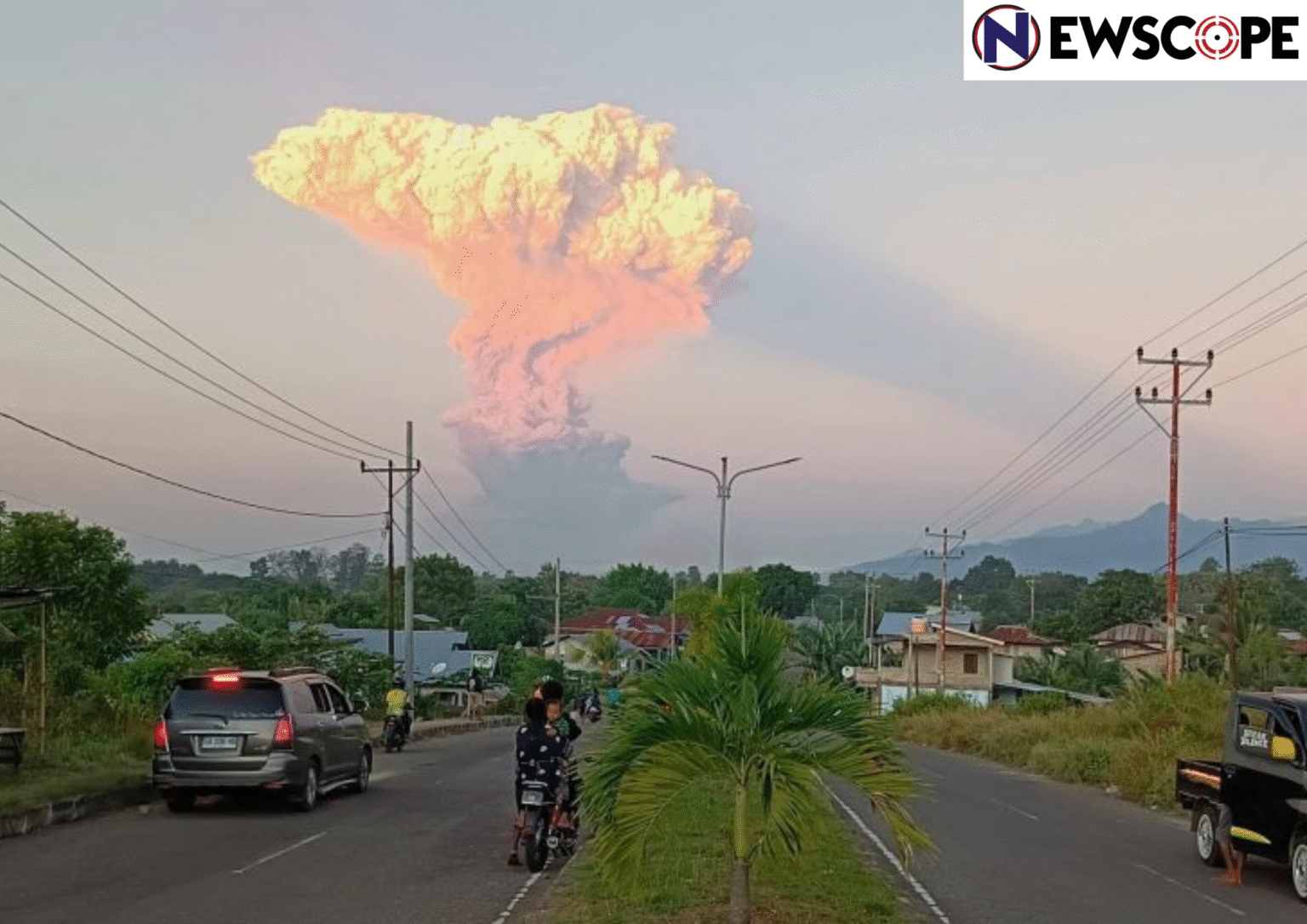Mount Lewotobi Laki-Laki in Indonesia’s East Flores province erupted twice within five hours on Friday and Saturday, sending massive clouds of ash high into the sky and triggering evacuation alerts and flight disruptions.
The first eruption on Friday evening shot ash up to 10 kilo-meters into the air, lighting up the sky with glowing lava and volcanic lightning. A second, more powerful eruption followed early Saturday, pushing ash as high as 19 kilo-meters (about 63,000 feet) into the atmosphere. Experts say this is one of the strongest eruptions from the volcano in recent times.
Following the twin blasts, Indonesia’s Geological Agency raised the alert to its highest level—Level IV—and expanded the danger zone to 6 to 7 kilo-meters from the crater, warning that areas in the path of the ash and lava may be at serious risk.
Nearby villages were blanketed in ash and rocks, with hot clouds and pyroclastic flows—fast-moving waves of gas and debris—racing down the slopes up to 5 kilo-meters
. Although no deaths have been reported, authorities are concerned about lava flooding and mudflows, especially if heavy rain follows.
The eruption also caused air travel chaos. Flights to and from Bali, including international routes like Air India, were canceled due to ash clouds drifting across the skies. Australia issued a red alert for flights, and Japan began monitoring for any tsunami risk linked to the eruption.
Mount Lewotobi is part of a twin volcano system—the “Laki-Laki” (male) and “Perempuan” (female) peaks—on Flores Island, a region prone to earthquakes and eruptions because it’s located along the Pacific Ring of Fire.
This volcano has been active recently, with eruptions in June and July and a deadly one in November 2024 that killed nearly 10 people and displaced thousands.
Officials urge people to stay out of restricted areas, wear masks to protect against ash, and stay alert for updates. More eruptions could still happen, and the risk remains high.



